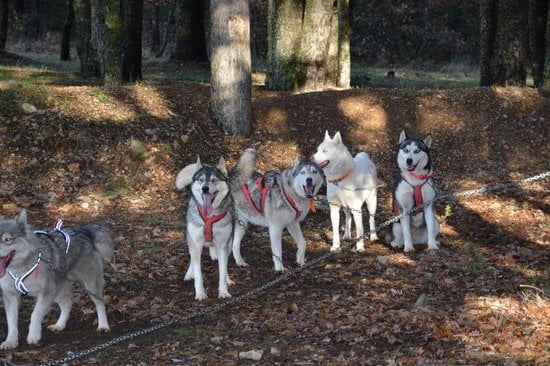What does the dog training clicker do? Dog training clickers have become a popular tool for pet owners and professional trainers alike.
In this article, we will delve into the world of clicker training for dogs, exploring its history, scientific principles, step-by-step guide, benefits, common misconceptions, success stories, and tips for choosing the right clicker. Whether you’re new to clicker training or looking to deepen your understanding of this method, this article will provide valuable insights into how the dog training clicker can be an effective tool in shaping a well-behaved and obedient canine companion.
Clicker training has gained popularity as a positive reinforcement method that helps dogs learn desired behaviors through the use of a small device known as a clicker. This technique is based on the principles of operant conditioning and has been proven to be an effective and humane way to train dogs. Understanding the basics of clicker training is essential for any dog owner or trainer looking to utilize this method successfully.
As we explore the history and development of the dog training clicker, we will uncover how this simple yet powerful tool has revolutionized modern animal training methods. We will also delve into the science behind how clicker training works for dogs, providing insights into why it is such a successful and rewarding approach to canine education.
So, if you’re curious about using a clicker for your furry friend’s training needs or are simply interested in learning more about this popular method, continue reading to discover all you need to know about dog training with a clicker.
The History and Development of the Dog Training Clicker
The use of clicker training in dog training has gained popularity in recent years, but the concept actually dates back to the 1940s. Clicker training is a form of positive reinforcement that uses a small handheld device, known as a clicker, to mark desired behaviors in dogs. This section will explore the history and development of the dog training clicker, shedding light on how this effective method of training came to be.
The concept of using a clicker as a training tool was first explored by Marian Breland Bailey and Keller Breland, two students of psychologist B.F. Skinner. They were studying operant conditioning, a type of learning where behavior is strengthened through reinforcement or punishment. They discovered that using a consistent sound, such as a click from a mechanical toy cricket, could effectively communicate to an animal when it had performed the desired behavior.
In 1992, Karen Pryor published “Don’t Shoot the Dog,” which introduced clicker training to the general public. This book helped bring clicker training into the mainstream and popularized its use in dog training. As a result, pet owners and professional trainers alike began using clickers as part of their training arsenal. Today, there are various types of clickers available on the market, each with its own unique features suited for different training needs.
- The origin and early development of the dog training clicker
- Contributions of notable figures in the evolution of clicker training
- The impact and spread of clicker training in modern dog obedience techniques
The Science Behind How Clicker Training Works for Dogs
The sound of the clicker is associated with the concept of classical conditioning, a behavioral training technique developed by Russian physiologist Ivan Pavlov. This technique involves associating a neutral stimulus with an involuntary response, creating a conditioned response. In the case of clicker training for dogs, the click serves as the neutral stimulus and the treat as the involuntary response.
Positive Reinforcement
Clicker training is based on the principle of positive reinforcement. When a dog performs a desired behavior and hears the click, it understands that a reward is forthcoming. This creates a positive association between the behavior and the reward, increasing the likelihood that the dog will repeat this behavior in the future.
Timing and Precision
One of the key aspects of clicker training is its precision in marking desirable behaviors. The distinctive sound of the click allows for instant feedback to be given to the dog at exactly the right moment. This precise timing helps to clearly communicate to the dog which specific action has earned them their reward.
Clicker training taps into how dogs naturally learn, enhancing their ability to understand what behaviors are desirable for their owners. By providing clear communication and prompt rewards, clicker training can effectively shape a dog’s behavior in a positive way.
Step-by-Step Guide on How to Use a Clicker for Dog Training
The step-by-step guide on how to use a clicker for dog training is an essential tool for any pet owner looking to incorporate this method into their training regimen. The first step is to introduce the clicker to your dog in a quiet and familiar environment. Start by clicking the device and immediately rewarding your dog with a treat. This will help your pet associate the sound of the clicker with a positive outcome.
Once your dog has made this connection, you can begin using the clicker during specific training sessions. For example, if you are teaching your dog to sit, click the device the moment your dog’s bottom touches the ground. Follow up with a treat as a reward for obeying the command. Consistency is key during this process, so make sure to use the clicker every time your dog displays the desired behavior.
It’s important to note that timing is crucial when using a clicker for dog training. The click should be immediate and precise, capturing the exact moment when your dog performs the desired action. With practice and patience, both you and your pet will become more adept at utilizing the clicker as an effective tool for training.
| Step | Description |
|---|---|
| 1 | Introduce Clicker in Quiet Environment |
| 2 | Use Clicker During Specific Training Sessions |
| 3 | Focus on Timing When Using Clicker |
The Benefits of Using a Clicker for Dog Training
Using a clicker for dog training offers numerous benefits that can help both dogs and their owners. One of the main advantages of using a clicker is its ability to provide clear and consistent communication with your dog.
When a dog performs a desired behavior, such as sitting or staying, the trainer can immediately click the device to mark the behavior, followed by a reward. This precise timing helps the dog understand exactly which action is being rewarded, making it easier for them to repeat the behavior in the future.
Another benefit of using a clicker for dog training is its effectiveness in shaping new behaviors. Clicker training allows for incremental progress, where desired behaviors are broken down into smaller steps and gradually shaped through reinforcement. Whether you are teaching your dog to come when called or to walk politely on a leash, the clicker can be used to capture and reinforce each small improvement, leading to more successful training outcomes.
Furthermore, clicker training promotes a positive learning experience for dogs by minimizing frustration and confusion. The clear feedback provided by the clicker helps dogs understand what they are doing right, which can boost their confidence levels and overall willingness to engage in training activities.
| Benefits | Explanation |
|---|---|
| Clear communication | The clicker provides precise timing to mark desired behaviors, making it easier for dogs to understand what is being rewarded. |
| Behavior shaping | Clicker training allows for incremental progress in shaping new behaviors through small steps and positive reinforcement. |
| Promotes positive learning experience | The use of a clicker minimizes frustration and confusion for dogs, leading to improved confidence levels during training. |
Common Misconceptions About Clicker Training and the Truth Behind Them
There are several misconceptions about clicker training for dogs, and it’s essential to debunk these myths to understand the truth behind this effective training method. Here are some common misconceptions about clicker training and the truth behind them:
1. **Misconception**: Clicker training is only for puppies or young dogs.
– **Truth**: Clicker training can be beneficial for dogs of all ages, from puppies to seniors. Dogs are never too old to learn new tricks or behaviors using a clicker. The key is consistency and positive reinforcement.
2. **Misconception**: Clicker training is complicated and time-consuming.
– **Truth**: Clicker training is actually quite simple and efficient. It involves associating the sound of the clicker with a reward, making it easier for the dog to understand which behavior is being reinforced. With regular practice and clear communication, clicker training can be a quick and effective way to train your dog.
3. **Misconception**: Using a clicker means I have to carry it around forever.
– **Truth**: While using a clicker during the initial stages of training is important to create that association between the sound and reward, eventually you can phase out the clicker and rely solely on verbal cues and rewards. Once your dog has learned the desired behaviors, the clicker becomes less necessary as they begin to understand what is expected of them.
By understanding these misconceptions about clicker training, you can see how this method can be suitable for various dogs, straightforward, and adaptable. Clicker training offers many benefits in promoting positive behavior and strengthening the bond between you and your furry friend.
Success Stories of Dogs Trained Using a Clicker
Clicker training for dogs has been proven to be an effective and efficient method of shaping their behavior. Many dog owners and trainers have shared success stories of how the clicker has helped them in teaching their pets new tricks, improving obedience, and resolving behavior problems. The clicker provides a clear and consistent form of communication between the trainer and the dog, making it easier for the animal to understand what is being asked of them.
One success story involves a dog named Max who had a fear of car rides. Through clicker training, Max’s owner was able to gradually desensitize him to being in the car by using positive reinforcement.
Whenever Max showed signs of calmness or relaxation while near the car, he would hear a click from the training clicker followed by a reward. Over time, Max’s anxiety lessened, and he eventually became comfortable with going on car rides without displaying any signs of fear.
Another notable success story is about a rescue dog named Bella who had behavioral issues such as jumping up on people and pulling on her leash during walks. With the help of a clicker and proper training techniques, Bella’s owner was able to redirect her focus towards more desirable behaviors. This resulted in Bella becoming calmer around people and walking politely on her leash without pulling.
The use of a clicker for training has opened doors for pet owners to successfully teach their dogs new skills and address problematic behaviors in a positive way. These stories demonstrate how clicker training can be incredibly beneficial in building trust and strengthening the bond between dogs and their human companions.
Tips for Choosing the Right Clicker for Your Dog’s Training Needs
Clicker Design and Ease of Use
There are various types of clickers available on the market, including box clickers, button clickers, and whistle clickers. Consider the design and ease of use of the clicker when making your choice. Some dogs may respond better to a specific type of clicker, so it can be helpful to try out a few different designs to see which one your dog prefers.
Volume and Loudness
The volume and loudness of the clicker are important considerations, especially if you plan to use it in various environments. A clicker that is too loud may startle some dogs or be disruptive in certain settings, while a clicker with adjustable volume settings can be more versatile and accommodating for different training scenarios.
Durability and Portability
Look for a clicker that is durable and portable, especially if you will be carrying it around during training sessions or outdoor activities. Consider factors such as size, weight, and material construction to ensure that the clicker can withstand regular use without easily breaking or malfunctioning.
By taking these factors into account when choosing a clicker for your dog’s training needs, you can select an option that aligns with your dog’s preferences and enhances the effectiveness of your training sessions. Remember that every dog is unique, so it may take some trial and error to find the perfect clicker that resonates well with your furry friend.
Troubleshooting Common Issues When Using a Clicker for Dog Training
In conclusion, the dog training clicker can be a highly effective tool for teaching and reinforcing desired behaviors in dogs. By understanding the basics of clicker training and the science behind how it works, pet owners can better utilize this method to train their furry companions. The step-by-step guide provided in this article offers a valuable resource for those looking to incorporate clicker training into their dog’s routine, and the benefits of using a clicker are numerous.
It is important to note that while clicker training can be incredibly successful, there may be some common issues that arise when implementing this method. However, with the helpful tips provided in this article for troubleshooting these issues, pet owners can overcome any obstacles they encounter during the training process. Additionally, choosing the right clicker for your dog’s specific training needs is crucial, and being aware of common misconceptions about clicker training can help dispel any doubts or concerns.
Finally, hearing success stories from other dog owners who have effectively used a clicker to train their pets serves as inspiration for those embarking on this journey. With patience, consistency, and proper guidance, clicker training can lead to great results and strengthen the bond between dogs and their owners. As with any type of training, it is important for pet owners to remain dedicated and committed as they work towards achieving positive behavior outcomes for their beloved canine companions.
Frequently Asked Questions
Is Clicker Training a Dog Worth It?
Clicker training can be worth it for many dog owners, as it offers a positive and effective way to train dogs. By using a clicker to mark desired behaviors, followed by a reward, dogs can quickly learn what is expected of them. This method often results in faster learning and better retention of commands.
What Does Clicker Training Involve?
Clicker training involves using a small handheld device that makes a clicking sound when pressed. The sound of the click is used to mark the moment when a dog performs the desired behavior, signaling to the animal that a reward is coming. This helps to clearly communicate to the dog which behaviors are being reinforced.
Can You Use a Clicker for Bad Behavior?
Yes, clicker training can be used for addressing bad behavior in dogs. While it may not solve all behavioral issues on its own, it can be an effective tool for redirecting negative behaviors and reinforcing positive ones instead. By consistently using the clicker to mark and reward good behavior, dogs can learn new habits and tendencies over time.

Welcome to the blog! I am a professional dog trainer and have been working with dogs for many years. In this blog, I will be discussing various topics related to dog training, including tips, tricks, and advice. I hope you find this information helpful and informative. Thanks for reading!





